Uruguay
UTC-3 (Uruguay Time - UYT)
Daylight saving time observed seasonally
Summer time: UTC-2 (UYST)
Uruguayan Peso (UYU)
US Dollar widely accepted in tourist areas
Credit cards accepted in urban areas and tourist destinations
August 25 (Independence Day)
Commemorates independence from Brazil in 1825
Celebrated with parades, concerts, and public events
Visa-Free Countries
Visa on Arrival Countries
E-Visa Countries
Visa Required Countries
Culture
Uruguayan culture reflects a unique blend of European influences, particularly Spanish and Italian, with indigenous Charrúa traditions and contributions from African cultures. Often described as one of Latin America's most progressive nations, Uruguay's cultural identity is characterized by its secular values, strong democratic traditions, and a distinctive literary and artistic heritage.
Key elements of Uruguayan culture include:
- European heritage: Unlike many South American countries, Uruguay has a predominantly European demographic composition, with approximately 88% of the population descending from European immigrants. Italian and Spanish influences are particularly strong in architecture, cuisine, and social customs. This European influence is visible in Montevideo's architectural styles, ranging from colonial buildings to Art Deco and Art Nouveau structures. The European heritage also shapes Uruguay's social attitudes, which tend to be more secular and progressive compared to many of its neighbors.
- Gaucho tradition: The gaucho (cowboy) culture forms an essential part of Uruguayan identity, particularly in rural areas. These horsemen of the pampas have contributed significantly to national folklore, music, and literature. Traditional gaucho skills are celebrated during rural festivals, where demonstrations of horsemanship and cattle handling are showcased. The gaucho tradition is reflected in the continued popularity of mate drinking, traditional asado (barbecue), folk music featuring the guitar, and distinctive rural clothing styles such as the wide-brimmed hat, baggy trousers (bombachas), and poncho.
- Carnival celebrations: Uruguay's Carnival is the longest in the world, lasting over 40 days from late January to early March. It features unique cultural expressions including candombe, a rhythmic drumming tradition with African roots recognized by UNESCO as Intangible Cultural Heritage. Murgas (theatrical musical groups that perform satirical shows commenting on current social and political issues) are another distinctive feature of Uruguayan Carnival. The celebration incorporates parades, neighborhood performances, elaborate costumes, and competitive events that draw participation from across society, making it a truly national cultural expression rather than just a tourist attraction.
- Literary tradition: Uruguay has produced notable literary figures who have shaped both national identity and Latin American literature. Eduardo Galeano's works, particularly "Open Veins of Latin America," gained international recognition for their critique of colonialism and economic inequality. Mario Benedetti's poetry and novels capturing urban middle-class life have been translated into numerous languages. Juan Carlos Onetti's existentialist works, including "The Shipyard," established him as one of Latin America's most respected novelists. Contemporary Uruguayan writers continue this tradition of social commentary and exploration of identity through literature.
- Progressive social values: Uruguay stands out in Latin America for its early adoption of progressive policies, from women's suffrage (1927) to the separation of church and state (1917). This progressive tradition continues with recent legislation on abortion rights, same-sex marriage, and cannabis legalization. These values shape cultural attitudes toward tolerance, individual freedom, and social equality, which are reflected in the arts, media, and everyday interactions. The country's small size and relatively homogeneous population have facilitated the development of a strong welfare state and social consensus on many issues.
Uruguayan cuisine reflects the country's European heritage with local adaptations:
- Meat-centered tradition: As one of the world's largest beef exporters per capita, Uruguay has developed a rich meat-based culinary tradition. The asado (barbecue) is more than a cooking method—it's a social institution that brings together family and friends for lengthy gatherings. Traditional parrillas (grills) serve various cuts of beef, such as short ribs (asado de tira), skirt steak (entraña), and sweetbreads (mollejas). The national sandwich, chivito, is a substantial creation featuring steak, ham, cheese, eggs, and various toppings, reflecting the hearty appetite associated with Uruguayan cuisine.
- Italian influence: Significant Italian immigration has left a lasting mark on Uruguayan cuisine. Pasta dishes are commonly served in Uruguayan homes, particularly on Sundays as family meals. Specialties include cappelletti (stuffed pasta), sorrentinos (large round ravioli), and gnocchi (ñoquis), which by tradition are eaten on the 29th of each month. Other Italian-influenced dishes include milanesa (breaded meat cutlet similar to cotoletta) and fainá (a chickpea flatbread similar to Italian farinata).
- Mate culture: Mate, a caffeine-rich infused drink, is fundamental to Uruguayan social customs. Uruguayans consume more mate per capita than any other nation, carrying their distinctive gourds (mate) and metal straws (bombilla) along with thermoses of hot water for regular consumption throughout the day. The ritual of preparing and sharing mate creates social bonds and is practiced across all social classes. Unlike in Argentina where mate is often shared in groups, Uruguayans typically have personal mates that aren't shared, reflecting subtle cultural differences within the River Plate region.
- Dulce de leche: This sweet milk caramel is ubiquitous in Uruguayan desserts. It's used as a filling for alfajores (sandwich cookies), pancakes, and pastries, spread on toast, incorporated into ice creams, and enjoyed in countless other preparations. Uruguayans consume substantial quantities of this treat and claim it as an essential part of their culinary identity, though the origin of dulce de leche is debated among several South American countries.
- Wine production: Uruguay has a growing wine industry, primarily focused on Tannat, a red grape variety that has become the country's signature varietal. The wine regions around Canelones and Maldonado produce distinctive wines that are increasingly recognized internationally. Wine consumption is an integral part of Uruguayan dining, particularly accompanying the traditional asado.
Contemporary Uruguayan culture continues to evolve while maintaining connections to tradition. The capital, Montevideo, serves as the cultural hub, hosting theaters, museums, and cultural centers that showcase both traditional and contemporary expressions. Ciudad Vieja (Old Town) preserves the colonial heritage, while newer neighborhoods reflect modern architectural trends. The nation's small population and high literacy rate have fostered a vibrant intellectual environment, with independent bookstores, cafés, and cultural venues facilitating ongoing dialogue about society and identity.
Despite increasing globalization, Uruguayans maintain strong connections to their cultural traditions. Annual gaucho festivals in the interior, the continued prominence of candombe drumming in urban neighborhoods, and the nationwide passion for football (soccer) all reflect the persistence of cultural practices that define Uruguayan identity. This balance between progressive social values and respect for tradition creates a distinctive cultural atmosphere that sets Uruguay apart from its larger neighbors while continuing to evolve in response to global influences.
Tourism & Best Sites to Visit
Uruguay offers visitors a distinctive blend of sophisticated urban experiences, historic colonial towns, and pristine Atlantic beaches. While less known internationally than some of its South American neighbors, Uruguay provides authentic cultural experiences, natural beauty, and a relaxed atmosphere that increasingly attracts discerning travelers seeking alternatives to more crowded destinations.
Here are some of Uruguay's most impressive destinations:
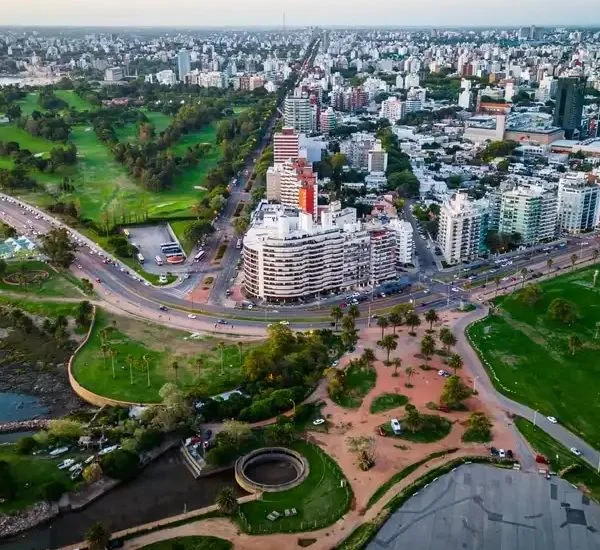
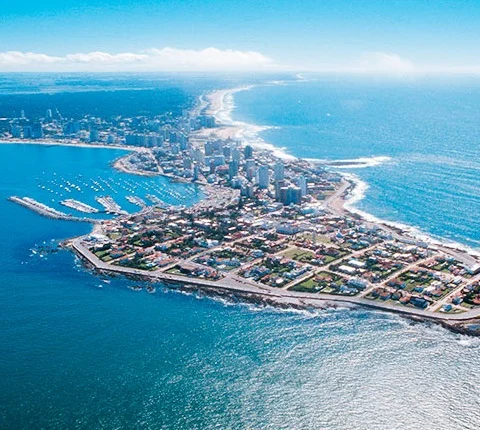
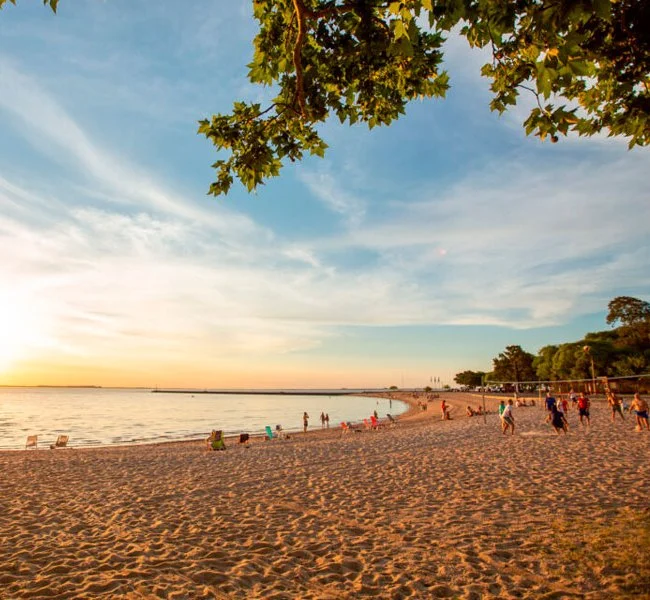
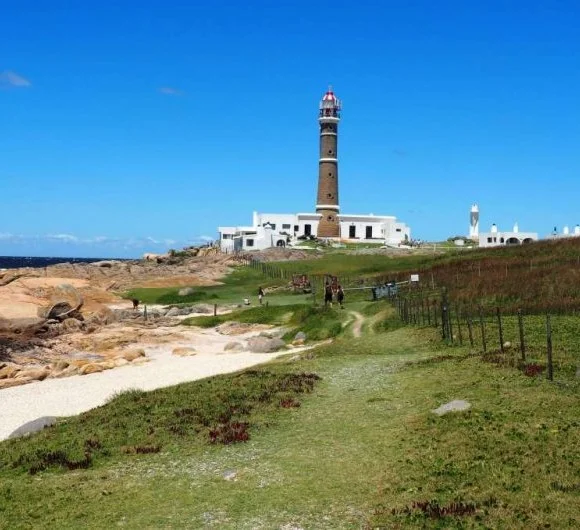
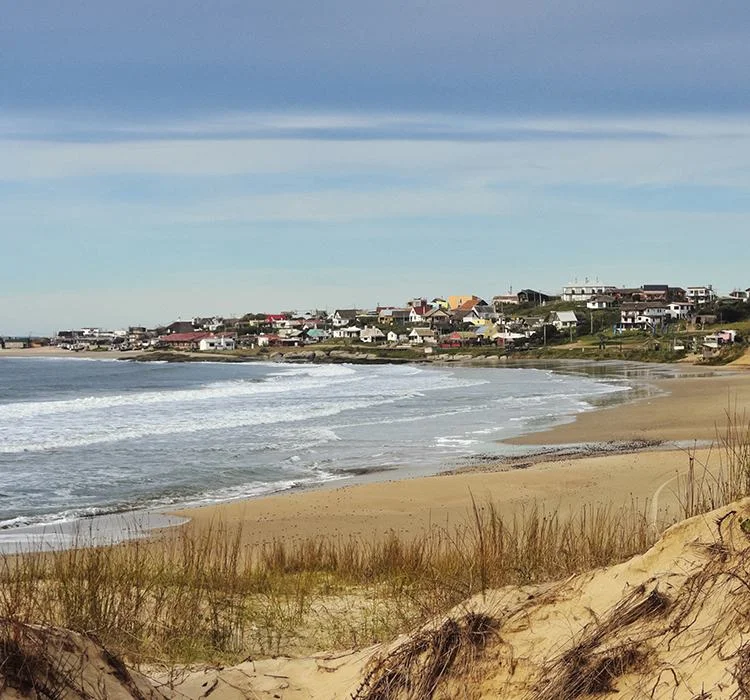
Montevideo: Uruguay's capital and largest city combines European elegance with South American warmth, offering visitors a blend of historic architecture, cultural attractions, and vibrant urban life. The Ciudad Vieja (Old Town) features colonial buildings, art galleries, and the pedestrian street Sarandí, lined with cafés and shops. The Mercado del Puerto, a 19th-century iron structure, houses multiple parrillas (grills) serving traditional Uruguayan cuisine in a lively atmosphere. Along the Rambla, a 22-kilometer waterfront promenade, locals and visitors gather for sunset views, exercise, and socializing. Cultural institutions include the Teatro Solís, Uruguay's oldest theater; the Museo Nacional de Artes Visuales, showcasing Uruguayan art; and MAPI (Museum of Pre-Columbian and Indigenous Art). Modern Montevideo comes alive in neighborhoods like Pocitos, with its beach and upscale dining, and Punta Carretas, where a former prison has been transformed into a shopping mall while preserving its distinctive architecture. For football enthusiasts, the Estadio Centenario, site of the first World Cup final in 1930, houses a museum dedicated to the sport that forms an essential part of Uruguayan identity. Throughout the city, visitors encounter vibrant street art, live music venues featuring candombe and tango, and welcoming café culture reflecting Montevideo's relaxed pace of life.
Punta del Este: This glamorous resort city transforms from a quiet coastal town to South America's premier beach destination during the southern hemisphere summer (December to February). Located where the Río de la Plata meets the Atlantic Ocean, Punta del Este offers two distinct coastlines: Playa Mansa (Calm Beach) with gentle waters ideal for families, and Playa Brava (Rough Beach), known for stronger waves and the iconic "La Mano" sculpture – massive concrete fingers emerging from the sand. The city blends sophisticated infrastructure with natural beauty, featuring high-rise luxury condominiums, world-class restaurants, and vibrant nightlife alongside pristine beaches and coastal landscapes. The marina showcases impressive yachts and offers departures for boat excursions to nearby islands. Just offshore, Isla Gorriti provides secluded beaches and historical ruins, while Isla de Lobos hosts South America's largest sea lion colony. Nearby neighborhoods have developed their own distinct identities: La Barra attracts a younger crowd with its surfing beaches and bohemian atmosphere; José Ignacio, once a simple fishing village, has evolved into an exclusive enclave with upscale but understated restaurants and boutique accommodations. Art enthusiasts visit the Casapueblo, a Mediterranean-inspired structure built by Uruguayan artist Carlos Páez Vilaró that now functions as a museum, hotel, and gallery with spectacular sunset views over the ocean.
Colonia del Sacramento: This UNESCO World Heritage site preserves Uruguay's oldest colonial settlement, founded by the Portuguese in 1680. Just a short ferry ride from Buenos Aires, Colonia's cobblestone streets, colorful historic buildings, and riverfront location create a picturesque setting that transports visitors to another era. The Barrio Histórico (Historic Quarter) features distinctively Portuguese urban design with irregular street layouts that contrast with the Spanish colonial grid pattern found elsewhere in the region. Visitors can climb the lighthouse (El Faro) for panoramic views of the old town and the Río de la Plata, explore the ruins of the 17th-century Convento de San Francisco, and visit museums housed in colonial-era buildings that display artifacts from the city's tumultuous history of Portuguese and Spanish rule. The Calle de los Suspiros (Street of Sighs) ranks among South America's most photographed streets with its distinctive colonial architecture. Classic vintage cars, preserved as unofficial monuments throughout the town, add to the nostalgic atmosphere. While history forms Colonia's primary appeal, the town also offers fine dining featuring local wines and river-fresh fish, artisanal shops, and comfortable accommodations ranging from international hotels to boutique guesthouses in restored historic buildings. The tranquil pace of life, especially midweek when day-trippers return to Buenos Aires, allows visitors to savor the town's unique charm.
Cabo Polonio: This remote coastal village offers an escape from modern conveniences into a distinctive natural environment unlike anywhere else in Uruguay. Located within a national park and accessible only by authorized 4x4 vehicles across massive sand dunes or on foot, Cabo Polonio has no public electricity or running water, creating an off-grid experience that attracts those seeking simplicity and connection with nature. The village centers around a small peninsula extending into the Atlantic, crowned by a historic lighthouse that visitors can climb for spectacular coastal views. Three pristine beaches surround the settlement: one facing a sheltered bay, and two others facing the open ocean with powerful waves popular among surfers. Just offshore, several small islands host one of Uruguay's largest sea lion colonies, where hundreds of these marine mammals can be observed in their natural habitat. The village itself consists of colorful fishermen's houses and rustic accommodations built directly on the sand, many using solar panels or generators for limited electricity. During summer, a small bohemian community of artists, musicians, and nature enthusiasts creates a unique social atmosphere, while winter brings solitude and dramatic Atlantic storms. Without light pollution, Cabo Polonio offers exceptional stargazing opportunities, and its location within a protected area preserves native wildlife including rare ombu trees, sea birds, and occasionally visiting penguins.
Punta del Diablo: Once a tiny fishing village, this coastal community has evolved into a laid-back beach destination that preserves its authentic character despite growing popularity. The name, meaning "Devil's Point," refers to the rocky peninsula extending into the Atlantic that creates multiple coves with distinct beaches. Unlike more developed resort areas, Punta del Diablo maintains an unpretentious atmosphere with sand streets, colorful wooden houses, and limited high-rise development. The town centers around a small fishing port where fishermen still launch their boats directly from the beach and sell the day's catch from simple stalls. Four main beaches offer different experiences: Playa de los Pescadores (Fishermen's Beach) features fishing boats and fresh seafood vendors; Playa del Rivero offers calmer waters; Playa de la Viuda attracts surfers with its consistent waves; and Playa Grande extends for kilometers of largely undeveloped coastline. During the brief summer high season (January and February), the population swells from a few hundred permanent residents to thousands of visitors, creating a vibrant but relaxed atmosphere with beachfront bars, craft markets, and impromptu music performances. Just north of town, Santa Teresa National Park protects a diverse coastal ecosystem of forest, dunes, and beaches, while offering camping facilities and the historic Fortaleza de Santa Teresa, an 18th-century Portuguese/Spanish fortress. The nearby Laguna Negra wetlands provide opportunities for birdwatching and nature exploration in a tranquil setting away from beach crowds.
Other notable destinations include Carmelo, a riverside town in Uruguay's emerging wine region known for boutique wineries and luxury lodges; Piriápolis, a seaside resort with a distinctive Belle Époque atmosphere and panoramic hillside views; the hot springs region near Salto, where thermal waters create natural spa experiences; Tacuarembó, the heart of gaucho country with traditional estancias (ranches) offering immersive rural tourism; and the wetlands of Rocha Department, where diverse ecosystems support exceptional birdwatching opportunities. The Atlantic coast between established resorts features numerous less-developed beach towns, each with distinctive character, including La Pedrera, Aguas Dulces, and La Paloma, allowing visitors to find their ideal balance of amenities and tranquility.
Transportation
Uruguay's compact size—about the same as the U.S. state of Washington or slightly larger than England—makes transportation relatively straightforward for travelers. The country's well-maintained road network, regular bus services, and flat terrain facilitate movement between major destinations, though some remote areas require more planning to access.
- Domestic Air Travel: Uruguay's small size limits the demand for domestic flights, with only a few routes operating regularly. LATAM and BQB Líneas Aéreas occasionally offer flights between Montevideo and Punta del Este during high season, though these services fluctuate based on demand. The international airports in Montevideo and Punta del Este serve as the main aviation hubs, with smaller facilities in cities like Rivera near the Brazilian border. For most travelers, the country's limited distances make air travel within Uruguay unnecessary, as land transportation offers more cost-effective and often more convenient alternatives. Most destinations can be reached from Montevideo within a few hours by bus or car, negating the advantages of flying domestically.
- Bus Travel: An extensive and comfortable bus network forms the backbone of public transportation in Uruguay, connecting all major cities and towns with frequent service. Companies like COT, Copsa, Turil, and Nuñez operate modern fleets with various service levels, from standard to premium options featuring fully-reclining seats (cama) on longer routes. The main bus terminal in Montevideo, Tres Cruces, serves as the central hub for intercity travel, offering connections throughout the country and to international destinations in Argentina, Brazil, and Chile. Buses operate on reliable schedules with advance ticket purchasing available online or at terminal counters. Popular routes like Montevideo-Punta del Este may have departures every half hour during high season, while more remote destinations might have only a few daily connections. The bus system is remarkably efficient and comfortable by regional standards, making it the preferred transportation mode for both locals and visitors traveling between cities.
- Urban Transportation: Montevideo offers the country's most developed urban transit system, featuring an extensive bus network locally known as ómnibus or bondi. The STM (Sistema de Transporte Metropolitano) integrates various bus lines with a rechargeable smart card payment system. Most urban buses are modern, though they can become crowded during rush hours. Taxis are plentiful in Montevideo and other cities, operating with regulated meters in the capital and negotiated fares in smaller towns. Ride-sharing services like Uber operate in Montevideo and Punta del Este but may have limited availability in smaller communities. The capital's Ciudad Vieja (Old Town) and Centro districts are highly walkable, with many attractions clustered within pedestrian-friendly zones. In recent years, Montevideo has expanded bicycle infrastructure, including dedicated lanes and a public bike-sharing system, though the city's hilly sections can challenge casual cyclists.
- Car Rental: Renting a car provides flexibility for exploring Uruguay's countryside, wine regions, and less accessible coastal areas. International agencies like Avis, Hertz, and Budget, along with local companies, operate from airports and city locations. Uruguay's road network is well-maintained by South American standards, with the main highways (rutas) connecting major destinations paved and clearly marked. Rural roads may be unpaved but are generally navigable in standard vehicles during dry weather. Traffic drives on the right, and most international driving licenses are recognized for tourist use. During the summer season (December-February), advance reservations are essential, particularly in Punta del Este where rental prices increase substantially. While generally safe, night driving on rural roads requires caution due to limited lighting and the occasional presence of livestock. Fuel stations can be sparse in rural areas, making it advisable to maintain a topped-up tank when venturing into the countryside.
- Ferry Services: Ferries provide an important connection between Uruguay and Argentina across the Río de la Plata. Two main operators, Buquebus and Colonia Express, offer high-speed services between Montevideo or Colonia and Buenos Aires. These modern vessels transport passengers and vehicles, with journey times ranging from one hour (Colonia-Buenos Aires on high-speed craft) to three hours (Montevideo-Buenos Aires). The ferry terminals in both Montevideo and Colonia are centrally located with good connections to other transportation. During peak tourist periods, advance booking is highly recommended as services can sell out, particularly on weekends and holidays. Ferry travel offers not only practical transportation but also scenic views of the Río de la Plata, one of the world's widest rivers. Smaller ferry and boat services operate to islands and remote coastal communities like Cabo Polonio during the summer season.
Regional Transportation Highlights:
- Coastal Route: The coastal highway (Ruta 10) connects Montevideo with beach destinations along the Atlantic, passing through Punta del Este, José Ignacio, La Paloma, and eventually reaching the Brazilian border. Bus services run frequently along this route during summer, while rental cars offer the flexibility to explore smaller beaches and nature reserves. The coastal route combines well-maintained highways with occasional scenic secondary roads closer to the shoreline.
- Wine Region: The Uruguayan wine country surrounding Montevideo and extending toward Carmelo requires independent transportation to visit multiple wineries efficiently. Some tour operators offer specialized wine excursions from Montevideo, while accommodations in wine regions can arrange local transportation between estates. The relatively short distances between wineries make day trips from Montevideo feasible for those preferring not to drive.
- River Uruguay Route: The western border region along the Uruguay River connects historic towns like Fray Bentos (home to a UNESCO-listed former meat processing plant), Mercedes, and Salto. Regular bus services link these communities, though a rental car allows exploration of rural attractions between major stops. This region also provides land border crossings into Argentina at several points.
- Northern Interior: Uruguay's gaucho heartland around Tacuarembó and Rivera features more limited public transportation options, with less frequent bus connections. This region rewards independent travel by car, allowing visitors to access rural estancias (ranches) and nature reserves off the main highways. The border with Brazil becomes more porous in this region, with the twin cities of Rivera (Uruguay) and Santana do Livramento (Brazil) essentially functioning as one urban area.
Accessibility considerations: Transportation accessibility varies across Uruguay. Modern long-distance buses generally provide accessible options, though advance notification is recommended. Montevideo has improved urban accessibility with low-floor buses and adapted taxis available upon request. Historic areas like Colonia's cobblestone streets and Montevideo's Ciudad Vieja present challenges for travelers with mobility limitations. Major hotels and tourist attractions increasingly offer accessible facilities, though smaller establishments may have limited accommodations. For visitors with specific accessibility requirements, contacting transportation providers and accommodations in advance is advisable.
Safety: Uruguay ranks among South America's safest countries for transportation. Roads are generally well-maintained, traffic laws are enforced, and public transportation operates reliably. Standard precautions apply: secure valuables when using public transit, use only registered taxis or ride-sharing services, and maintain awareness in bus terminals, particularly at night. During the summer tourist season, increased traffic along coastal routes can lead to congestion and requires additional patience, especially on weekends when locals and Argentine visitors travel between beach destinations.
Airports
Uruguay's aviation infrastructure centers primarily around two international airports serving the capital city and the main tourist destination, with several smaller facilities handling domestic connections and private aviation. The country's compact size and excellent road network mean that air travel plays a smaller role in domestic transportation compared to neighboring countries.
- Carrasco International Airport (MVD): Uruguay's principal international gateway, officially named Aeropuerto Internacional de Carrasco General Cesareo L. Berisso, is located approximately 20 kilometers east of Montevideo's city center. Opened in 2009, the sleek, modern terminal designed by renowned architect Rafael Viñoly has won multiple architectural awards for its distinctive curved design resembling a sand dune. The facility handles approximately 2 million passengers annually, offering direct connections to major cities throughout South America, as well as service to Panama City, Madrid, and seasonal flights to Miami. Airlines serving Carrasco include LATAM, Iberia, Air Europa, Aerolineas Argentinas, GOL, and Avianca. The single-terminal design features expansive glass walls providing natural light, with clear separation between departures (upper level) and arrivals (ground level). Amenities include several restaurants and cafés, duty-free shopping, currency exchange services, car rental counters, and free Wi-Fi throughout the terminal. Transportation options to Montevideo include official airport taxis with fixed rates to different zones, shuttle services operated by COT, and local buses that connect to the city's main transport hub. The airport's modern infrastructure and efficient processing make for a pleasant arrival and departure experience, typically with shorter lines and less congestion than larger regional hubs.
- Punta del Este International Airport (PDP): Officially Aeropuerto Internacional de Punta del Este, this facility is also known as Laguna del Sauce Airport due to its location near that body of water, approximately 15 kilometers from downtown Punta del Este. The airport experiences highly seasonal traffic patterns, with significant increases during the Southern Hemisphere summer (December-February) when charter flights and additional scheduled services operate to accommodate tourists. Year-round connections include flights to Buenos Aires and Montevideo, with seasonal service to São Paulo, Santiago, Asunción, and occasionally direct flights from Panama City and Lima during peak periods. The terminal facilities, while smaller than Carrasco, offer necessary services including car rental agencies, cafés, and transportation to Punta del Este and nearby resort areas. During high season, advance arrangements for ground transportation are recommended as taxi availability can be limited during peak arrival times. The airport primarily serves the leisure market, with business aviation also forming a significant component of operations as wealthy visitors arrive via private aircraft.
- Other aviation facilities: Uruguay maintains several smaller airports with limited commercial service or dedicated to general aviation. Rivera Airport, near the Brazilian border, occasionally hosts flights connecting to Brazilian cities and Montevideo. Salto Airport in the country's northwest provides facilities for private aircraft and potential future regional service. Colonia del Sacramento and Carmelo have small airfields primarily serving private aviation, yachting visitors, and occasional charter flights. These secondary facilities mainly accommodate private aircraft, air taxi operations, flight training, and emergency medical services rather than scheduled commercial flights.
Domestic Air Service: Uruguay's limited size means domestic air travel plays a minimal role in the country's transportation system. Scheduled commercial flights between Uruguayan cities operate sporadically and primarily connect Montevideo with Punta del Este during the summer tourist season. These routes are subject to changes based on demand, with services sometimes being suspended during off-peak periods. Air charter services offer more flexibility for visitors wishing to maximize time efficiency, particularly for accessing more remote areas or for business travelers with tight schedules. The limited domestic network reflects the efficiency of Uruguay's road transportation system, with most destinations accessible from Montevideo within a 3-5 hour drive.
Airlines and Routes: International connectivity from Uruguay has improved in recent years, though it remains more limited than larger neighbors like Brazil and Argentina. LATAM and Aerolineas Argentinas provide the most extensive regional networks from Montevideo, connecting to major South American cities. Direct European service is limited to Iberia and Air Europa flights to Madrid, with most other global connections requiring transit through São Paulo, Buenos Aires, Panama City, or Santiago. North American connections include seasonal direct service to Miami, with year-round access via connecting hubs. Airlines occasionally adjust services based on seasonal demand and economic conditions, with summer months seeing expanded schedules to accommodate tourists.
Immigration and Customs: Entry procedures at Uruguayan airports are generally efficient and straightforward. Many nationalities, including travelers from the European Union, the United States, Australia, and most South American countries, can enter without a visa for stays up to 90 days. Immigration officers typically require proof of onward travel and sometimes evidence of sufficient funds for the intended stay. Customs procedures involve standard declarations for commercial goods and restrictions on bringing in certain food products, particularly those of animal origin. The process is usually quick for tourists with nothing to declare. Upon departure, an airport tax is included in international ticket prices, so no additional payment is required at the airport. Immigration and security checks for departing international flights generally move quickly compared to larger regional airports, though arriving at least 2-3 hours before international departures is still recommended, particularly during high season.
Airport Development: Uruguay has invested significantly in modernizing its aviation infrastructure, most notably with the award-winning new Carrasco terminal. The government continues to evaluate potential improvements to regional airports to support tourism development in emerging destinations like the thermal spa region near Salto and the country's Atlantic coast beyond Punta del Este. However, the country's small population and the dominance of land transportation for domestic travel limit the economic viability of major expansions to the airport network. Future development will likely focus on enhancing facilities at existing airports rather than constructing new ones, with emphasis on improving the passenger experience and expanding international connections from Carrasco.
Visa & Travel Information
Uruguay maintains relatively open border policies, making it accessible for tourists from many countries. The nation's political stability, low crime rates, and modern infrastructure contribute to its reputation as one of South America's most traveler-friendly destinations. Visitors should be aware of entry requirements and practical considerations before planning their trip.
Visa Requirements by Nationality
The following table outlines entry requirements for common nationalities:
| Nationality | Entry Option | Maximum Stay |
|---|---|---|
| USA, Canada, EU countries, UK, Australia | Visa-Free | 90 days |
| MERCOSUR countries (Argentina, Brazil, Paraguay) | Visa-Free | 90 days (ID card sufficient) |
| Most Latin American and Caribbean countries | Visa-Free | 90 days |
| Japan, South Korea, Israel, New Zealand | Visa-Free | 90 days |
| China, India, most African countries | Visa Required | Depends on visa type |
Visa-Free Entry Requirements: For eligible nationalities, requirements typically include:
- Passport valid for at least six months beyond the planned departure date
- Evidence of onward or return travel (airline or bus ticket)
- Proof of accommodation arrangements (hotel reservations or invitation letter)
- Sufficient financial resources for the intended stay (rarely checked but technically required)
Visa Extensions: Visitors entering visa-free can extend their stay for an additional 90 days (maximum 180 days per year) by applying at the National Migration Office in Montevideo before the initial authorization expires. The process requires completing forms, providing passport photos, paying a fee (approximately $50-60), and sometimes demonstrating financial means. Extensions should be arranged at least one week before the initial period expires to avoid complications.
Border Crossings: Uruguay shares borders with Argentina (across the Uruguay River and Río de la Plata) and Brazil (land border to the north and northeast). Major border crossings include Fray Bentos-Puerto Unzué, Paysandú-Colón, and Salto-Concordia with Argentina; and Rivera-Santana do Livramento, Chuy-Chuí, and Río Branco-Jaguarão with Brazil. Ferry services connect Montevideo and Colonia del Sacramento with Buenos Aires, Argentina. Land border crossings generally operate from 8:00 AM to 10:00 PM, though some major crossings may have extended hours. Processing times vary by season, with potential delays during summer months and holidays.
Travel Insurance: While not mandatory for entry, comprehensive travel insurance covering medical emergencies is strongly recommended. Uruguay has high-quality private healthcare facilities, particularly in Montevideo and resort areas, but costs can be substantial without insurance. Policies should include coverage for emergency medical evacuation if traveling to remote areas.
Health Considerations: No specific vaccinations are required for entry to Uruguay from most countries, though standard travel immunizations are recommended. The country has excellent sanitation standards, and tap water is generally safe to drink in urban areas. Healthcare facilities in Montevideo and major tourist destinations meet international standards, with English-speaking medical professionals available in private hospitals. Visitors should carry any necessary prescription medications in original packaging with a doctor's letter explaining their purpose.
Safety: Uruguay ranks as one of Latin America's safest countries, with stable political conditions and low violent crime rates. Standard travel precautions apply, particularly in Montevideo where petty theft can occur in tourist areas and transportation hubs. The country maintains a professional police force, and emergency services are reliable in urban areas. The nationwide emergency number is 911.
Currency and Payments: The Uruguayan Peso (UYU) is the official currency, though US Dollars are widely accepted in tourist areas and major establishments. ATMs are readily available in cities and towns, providing both pesos and sometimes dollars. Credit cards are widely accepted in urban areas and tourist destinations, with Visa and Mastercard enjoying the broadest acceptance. Uruguay has relatively high prices compared to neighboring countries, particularly for accommodation and dining in tourist destinations during high season.
Communications: Uruguay has excellent telecommunications infrastructure with widespread 4G mobile coverage and widely available Wi-Fi in accommodations, restaurants, and public spaces. International roaming works well with major carriers, though local SIM cards offer more economical data options for longer stays. These can be purchased from providers like Antel, Claro, and Movistar with minimal documentation requirements. The country code for Uruguay is +598.
Accessibility: Urban areas in Uruguay have made progress in accessibility, though challenges remain. Montevideo has improved sidewalk ramps and public transportation access, while newer hotels offer accessible rooms. Historic areas like Colonia del Sacramento present challenges with cobblestone streets and older buildings. Travelers with specific accessibility needs should research accommodations carefully and consider contacting the Uruguayan tourism board for guidance.
Language: Spanish is the official language, with a distinctive Rioplatense dialect similar to that spoken in Argentina. English proficiency varies, with better coverage in tourist areas, international hotels, and among younger Uruguayans. Basic Spanish phrases are appreciated, though many tourism professionals can communicate in English. Portuguese is commonly understood in border regions with Brazil.

